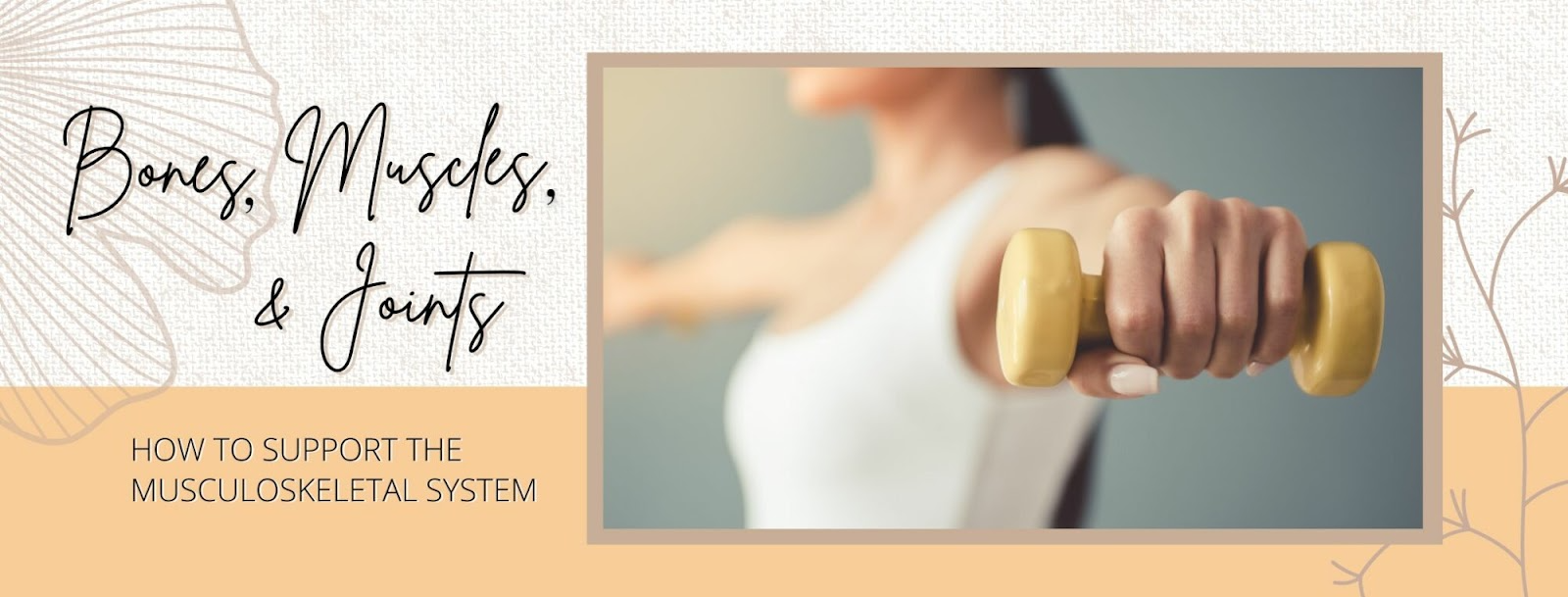
Our bodies were made for movement, but sadly so many of us deal with issues in this department. Joint stiffness, muscle aches, deteriorating cartilage, inflammation, swelling, and the list goes on. Nobody wants to spend their days focused on pain, right?! So let’s unpack some ways we can support our musculoskeletal systems.
We are going to cover the basics and get you set up to start making some positive changes. You’ll know how this system works, what things you may want to avoid, and what things you might want to start implementing. Let’s get started!
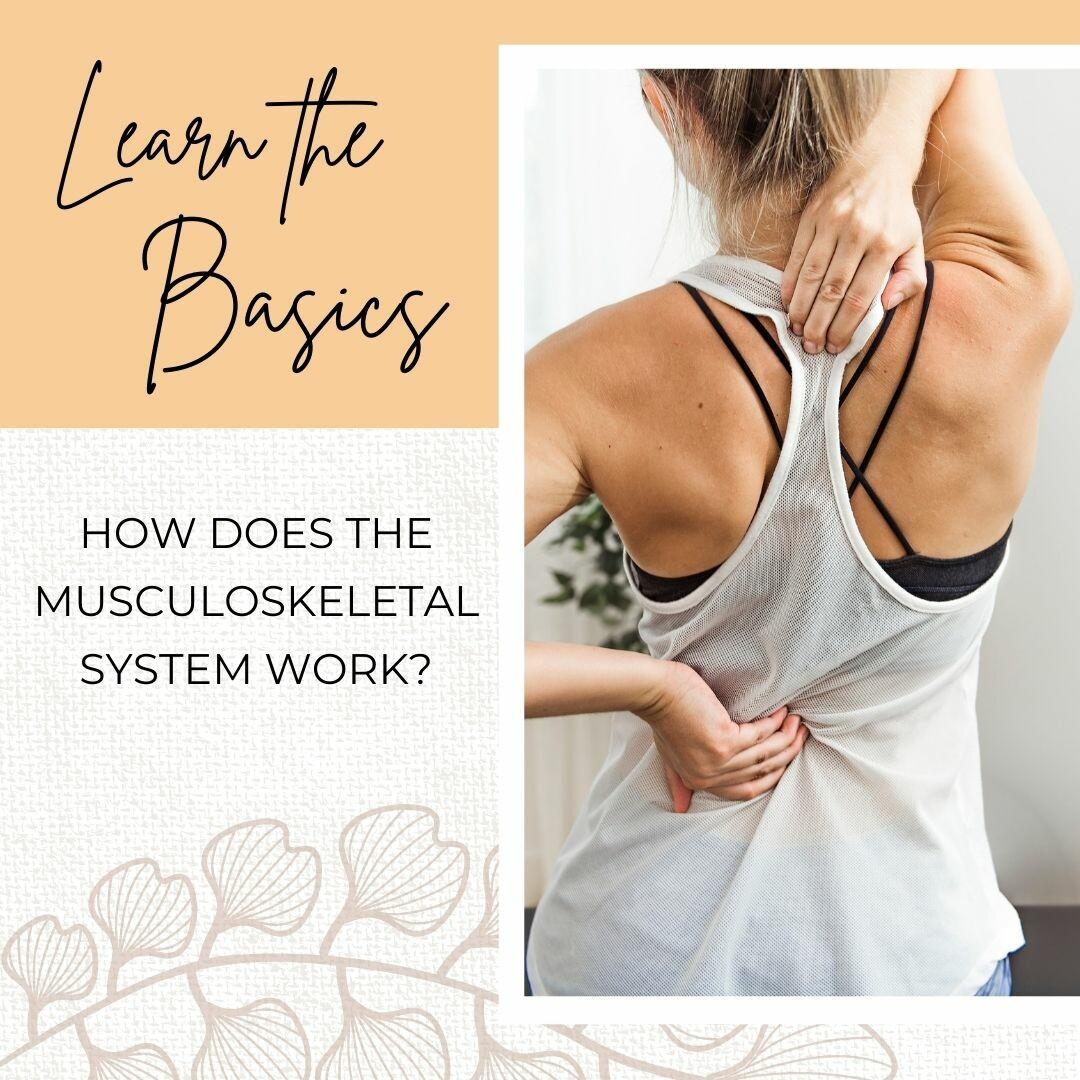
Before we learn how it works, let’s talk about what makes up the musculoskeletal system. It includes your bones, joints, muscles, and connective tissues like cartilage, ligaments, and tendons.
Bones support your body, protect organs and tissues, store calcium and fat and produce blood cells. Did you know an adult has 206 bones? That’s a lot! Joints connect two bones together and allow for movement.
Muscles are made up of thousands of stretchy fibers. An adult has more than 600 muscles! Some of those muscles are voluntary like the ones you use to dance or write your name. You use those intentionally. And some of those muscles are involuntary like the heart and stomach. You use those without even realizing it.
Now let’s talk about connective tissues. Ligaments are made of tough collagen fibers that connect bones and help stabilize joints. Tendons are tough and made of fibrous tissue and collagen; they connect muscles to bones. Cartilage protects bones from rubbing against each other. You also have cartilage in your nose, ears, pelvis and lungs.
So what happens when you’re ready to move? The brain sends a message to activate your voluntary muscles. Your muscle fibers then contract in response to the message. When the muscle activates, it pulls on the tendon, which is what connects it to the bone. The tendon pulls on the bone, making it move. To relax the muscle, the brain sends another message, telling it to relax or deactivate. The muscle releases tension, moving the bone to a resting position. How cool is that?!
As you can see, this body system really works together to provide structure and fluid movement for your body. It’s certainly worth supporting!
We’ve talked about HOW the musculoskeletal system works, now we are going to dive into some more practical information. What can cause harm to this system, causing you unwanted aches and pains? What things should you be avoiding? Let’s take a look!
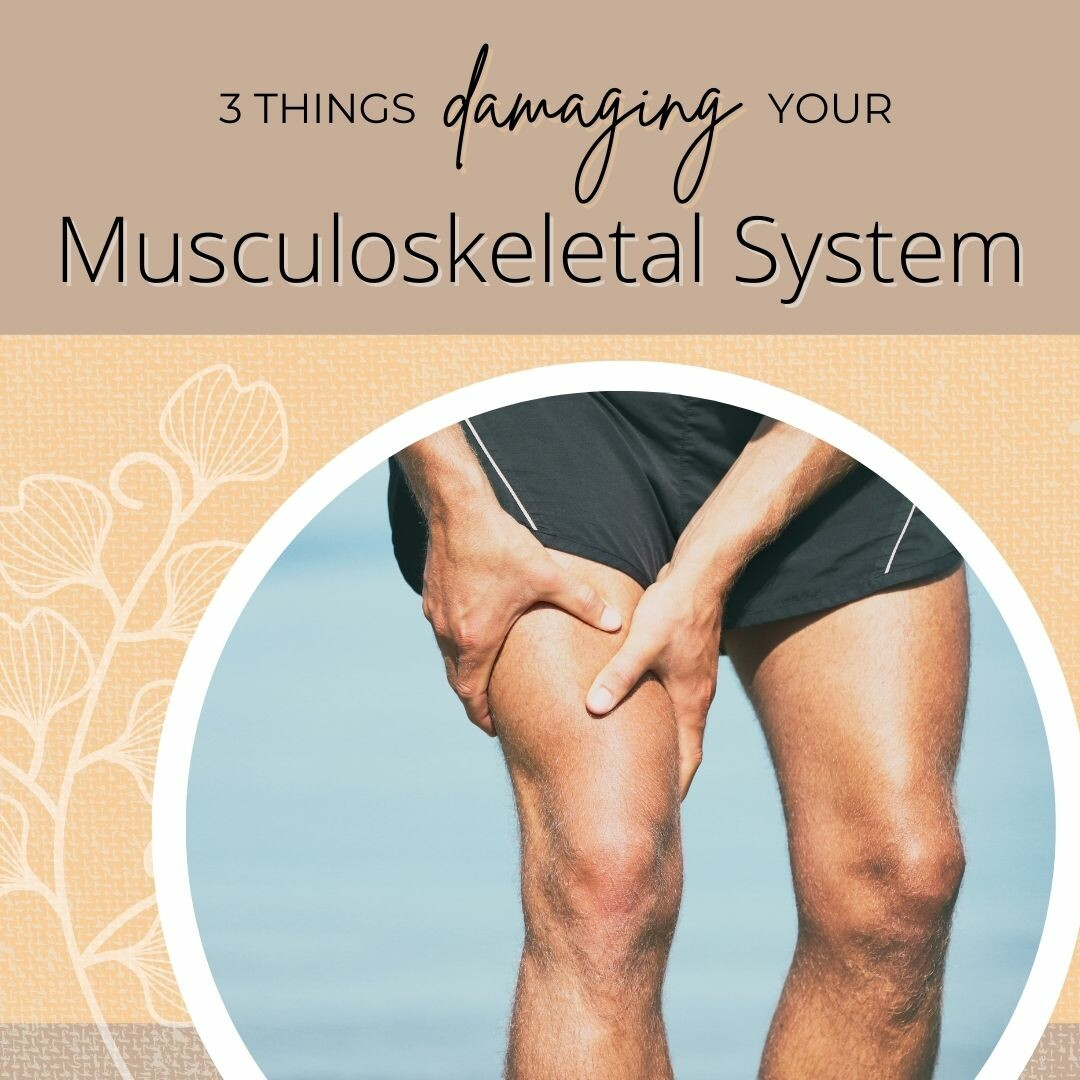
There are a number of things that can cause pain to your body - aging, injuries, disease, arthritis, cancer, congenital disorders - but one main area that people tend to dismiss is diet. Did you know that a poor diet can be dangerous to your musculoskeletal system? It may sound silly, but it’s true!
Certain foods and substances cause inflammation in the body, which equals pain and immobility. Processed meats, fried food, high amounts of alcohol, soda, candy, and refined grains are all considered foods that can increase inflammation in the body. Gluten and dairy can cause issues for some as well. You may also want to consider your sources for fat. Highly processed refined vegetable oils are rich in omega-6 fatty acids. While this isn’t necessarily bad, it can cause inflammation if it’s not met with an appropriate level of omega-3 fatty acids (fish, avocado, nuts, seeds, etc.).
Smoking can also be damaging to your musculoskeletal system. Nicotine causes your blood vessels to constrict or narrow, which causes there to be less blood flow throughout the body and to your major organs. This means less oxygen and nutrients for your cells; we definitely don’t want that!
Lastly, stress can be very damaging to your musculoskeletal system. An abundance of stress causes an overactive immune system - also known as autoimmune disease. That typically means inflammation within the body, which can cause weakness and even lead to tissue degeneration. No thank you!
Which of these three things do you think you want to work on first?
Now for some ways to HELP your musculoskeletal system…

1. Be active. Inactivity can lead to stiff, tense muscles, which can worsen things like arthritis and cause unnecessary stress on joints. Weak muscles also put you at greater risk for injury and compensation. Do your best to get regular exercise to strengthen and stretch your muscles; this should increase circulation and help alleviate any pain you’re currently experiencing. Now, if exercise seems like an impossible feat for you, consider doing low-impact exercises like swimming, yoga, or cycling and go from there.
2. Eat anti-inflammatory, mineral-rich foods. Consider eating veggies containing sulfate - like broccoli, cauliflower, garlic, cabbage, and onions - they can help build cartilage. You will also want to include fruits and vegetables that contain bioflavonoids - blueberries, blackberries, cherries, cinnamon, acai, red cabbage, and onions - these can help strengthen connective tissue and encourage collagen production. Did you know Young Living’s Ningxia Red contains several of these fruits? And it’s delicious!!
Bone broth is rich with collagen, and contains tons of joint-healthy ingredients, like glucosamine and chondroitin as well as calcium, magnesium, phosphorus, silicon, and sulfur. You may also want to include things like chia seeds, flaxseeds, beans, chickpeas, eggs, and healthy fats like avocado oil and ghee. Foods containing omega-3 fatty acids can help reduce inflammation in the body. Yes please!
Foods high in zinc can help with the production of connective tissue! That includes foods like lamb, grass-fed beef, oysters, sesame seeds, and pumpkin seeds. Foods high in copper can help your natural collagen mature! That includes foods like avocado, cacao, sesame seeds, sunflower seeds, and cashews. Foods high in phosphorus help maintain healthy bones and teeth. That includes foods like fish, poultry, beef, eggs, milk products, almonds, lentils, peanuts, and pumpkin seeds. Wow - so many great options!
3. Reduce your stress. Stress can trigger inflammation and accelerate the aging process. Find ways to incorporate rest and relaxation into your schedule, allowing your body to get the proper sleep it needs. Go on walks, take up yoga, limit phone use and screen time, take a hot bath, reduce your caffeine intake, set healthy boundaries with your schedule, spend time in nature, practice deep breathing, use essential oils to encourage relaxation - so many good ways to reduce the stress in your life. Some of my favorite essential oils to use are Stress Away, Peace & Calming, Tranquil Roll-On, and Valor. You can diffuse/inhale them or apply them topically.
4. Implement epsom salt soaks. If you’ve ever had sore muscles or joints, you know how relieving a nice bath or soak can be. When you add epsom salt to the mix, you’re adding in magnesium and sulfates, which are easily absorbed by the skin. Many people use this to help reduce inflammation and ease the body’s aches and pains. So give it a try next time you need a good soak!
You can even add in 3-10 drops of an essential oil of your choice. Start with 1-2 cups of epsom salt and stir in the essential oil(s). Then pour it into hot water and mix well. Here are some oils I would suggest trying: Lavender, Frankincense, PanAway, Wintergreen, Peppermint, Copaiba, Eucalyptus Radiata, or a combination of these.
5. Consume quality supplements. Of course you can support your musculoskeletal naturally with diet changes, but sometimes supplements are needed. They can be a great way to ensure you get what your body needs. For example, calcium builds strong teeth and bones and is needed for muscle growth. However, our bodies do not produce it naturally. Should you choose to supplement, you might want to consider Super Cal Plus from Young Living, which is a synergistic blend of bioavailable calcium, magnesium, vitamins D and K, and other trace minerals.
Anti-inflammatory herbs like turmeric are great for your musculoskeletal system as well. Consider trying Golden Turmeric - Young Living’s mango-rose flavored turmeric drink mix. This supplement supports the body’s natural response to inflammation, immune response, joint health, mobility, and recovery after physical exertion.
Another great supplement option would be AminoWise. It enhances muscle performance, reduces fatigue, and supports muscles during and after exercise using a triple-targeted formula that features branched-chain amino acids, premium essential oils, antioxidants, and minerals.
And one more personal favorite is BLM. This supplement offers nutritional support for bones, ligaments, and muscles with powerful, natural ingredients such as type II collagen, MSM, glucosamine sulfate, and manganese citrate.
Now, I want to highlight two of my favorite supplements for supporting healthy joints, bones and muscles!

Let’s take a deeper look at a supplement that’s a great option for supporting your musculoskeletal system - Agilease.
AgilEase is a joint health supplement that supports healthy cartilage, flexibility and mobility, and the body’s natural response to inflammation after exercise. With a powerful blend of ingredients - including frankincense powder, UC-II undenatured collagen, and an essential oil blend of Wintergreen, Copaiba, Clove, and Northern Lights Black Spruce - AgilEase can help you protect your joint and cartilage health and gain greater mobility and flexibility through the reduction of inflammation.
That frankincense powder comes from Boswellia trees. Did you know that Boswellia contains chemical compounds that can help naturally reduce the body’s response to inflammation? How cool is that?! Agilease also contains hyaluronic acid, which has a big list of benefits. Go to pubmed.gov and search for “hyaluronic acid” and see for yourself! And did you notice that I said Agilease contains collagen? Yep! Now go to PubMed and type that in. Prepare to be amazed!
For best results, take 2 capsules of Agilease daily for joint support. You can also use Agilease as part of your workout routine.
I mentioned earlier that a diet containing omega-3 fatty acids may be beneficial for your musculoskeletal system. However, it’s not always easy to get an adequate amount daily - supplementation may be helpful. Young Living has a great option for you with OmegaGize³.
OmegaGize³ combines the power of three core daily supplements: omega-3 fatty acids, vitamin D3, and CoQ10 (ubiquinone). These supplements combine with their proprietary enhancement essential oil blend (Clove, German Chamomile, and Spearmint) to create an omega-3, DHA-rich fish oil supplement that may support general wellness. Used daily, these ingredients work synergistically to support normal brain, heart, eye, and joint health. It even supports cardiovascular and skeletal health. Yes please!!
The fish complex in this supplement is derived from the cleanest water on the planet and is stabilized by the addition of essential oils and mixed carotenoids. You also don’t have to worry about consuming ocean pollutants because OmegaGize³ tests lower than the maximum-allowable standard set worldwide to limit environmental pollutants. And a huge bonus - there’s NO fishy taste!
Take 2−4 capsules of OmegaGize³ 2 times daily. Do not exceed 8 capsules per day.So what do you think… ready to grab some OmegaGize³? Sounds like a great supplement, doesn’t it

Thank you so much for setting aside time to look at the musculoskeletal system with us and what Young Living has to offer you in terms of supporting it. Your body is an amazing web of intricate systems, all working together for one goal - to keep you alive and well - and feeling amazing, of course. The musculoskeletal system helps us move and gives our body the framework it needs. It certainly deserves some tender loving care. Don’t you think?
I mentioned several products from Young Living plus a few other things that make it super simple to support your bones, muscles, and joints - so, let me make it easy for you to just load them into your cart without all the search time!
Find all the recommendations from the class and then some-
Also, CLICK HERE to download my quick reference guide, '5 Simple Ways to Care for Your Bones, Muscles, & Joints' so you can keep this info handy! Our community is here and ready to come alongside you on this journey to better wellness! And, as always, I am here to help if you have any questions!
And, BONUS info...I've also got a mini aches & pains text series you can grab by texting the keyword 'pain relief' to 630-283-8700.







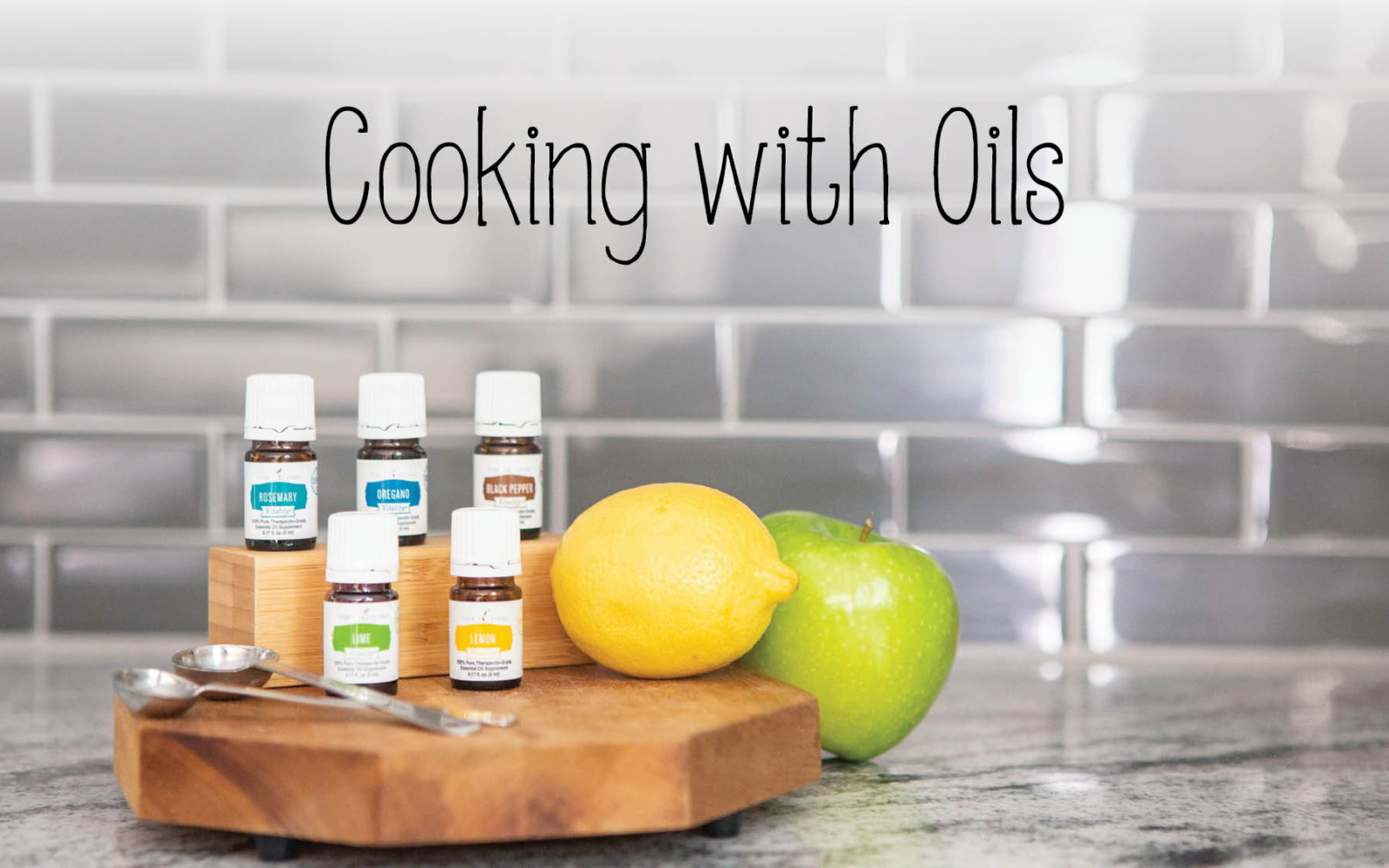
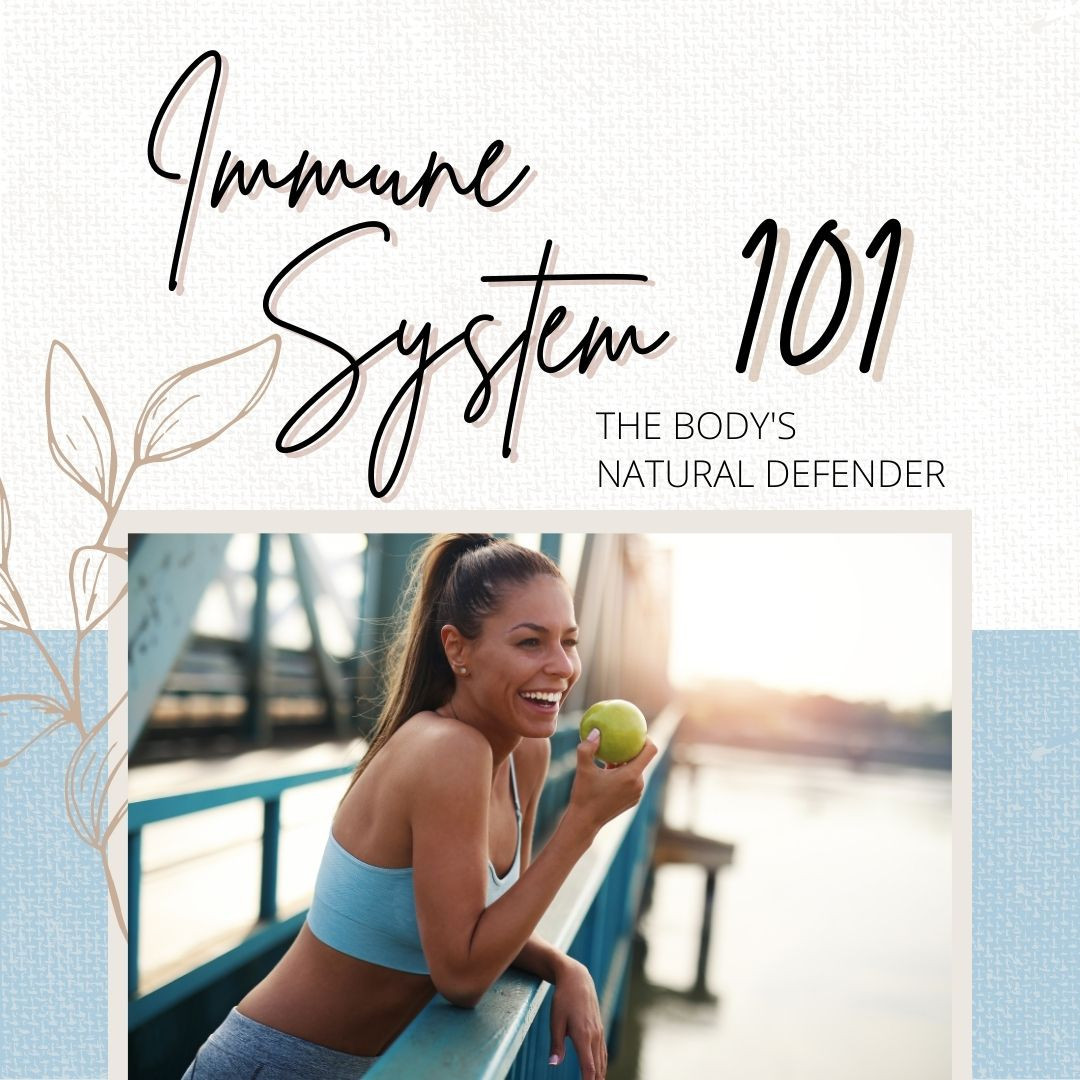



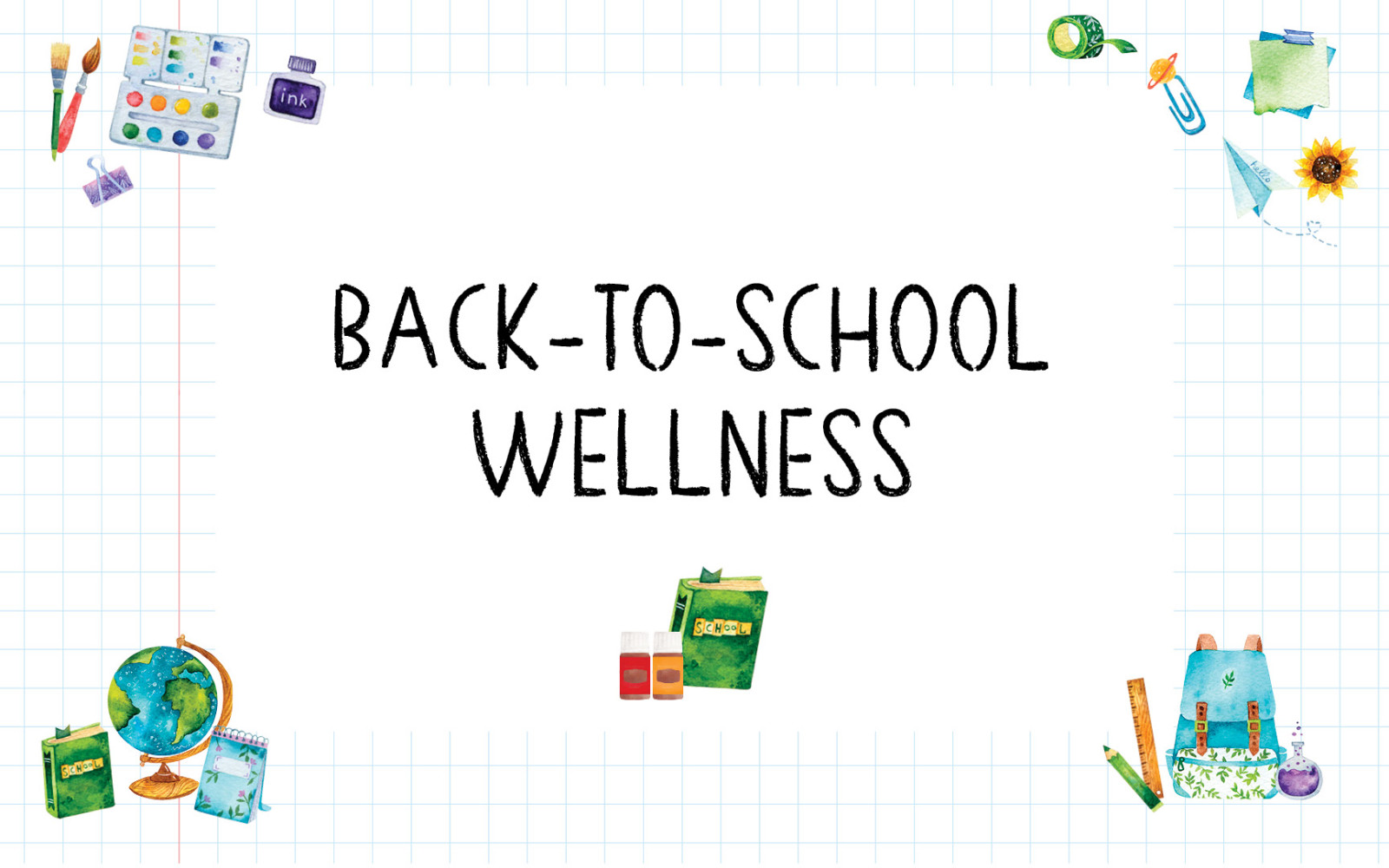





0 Comments